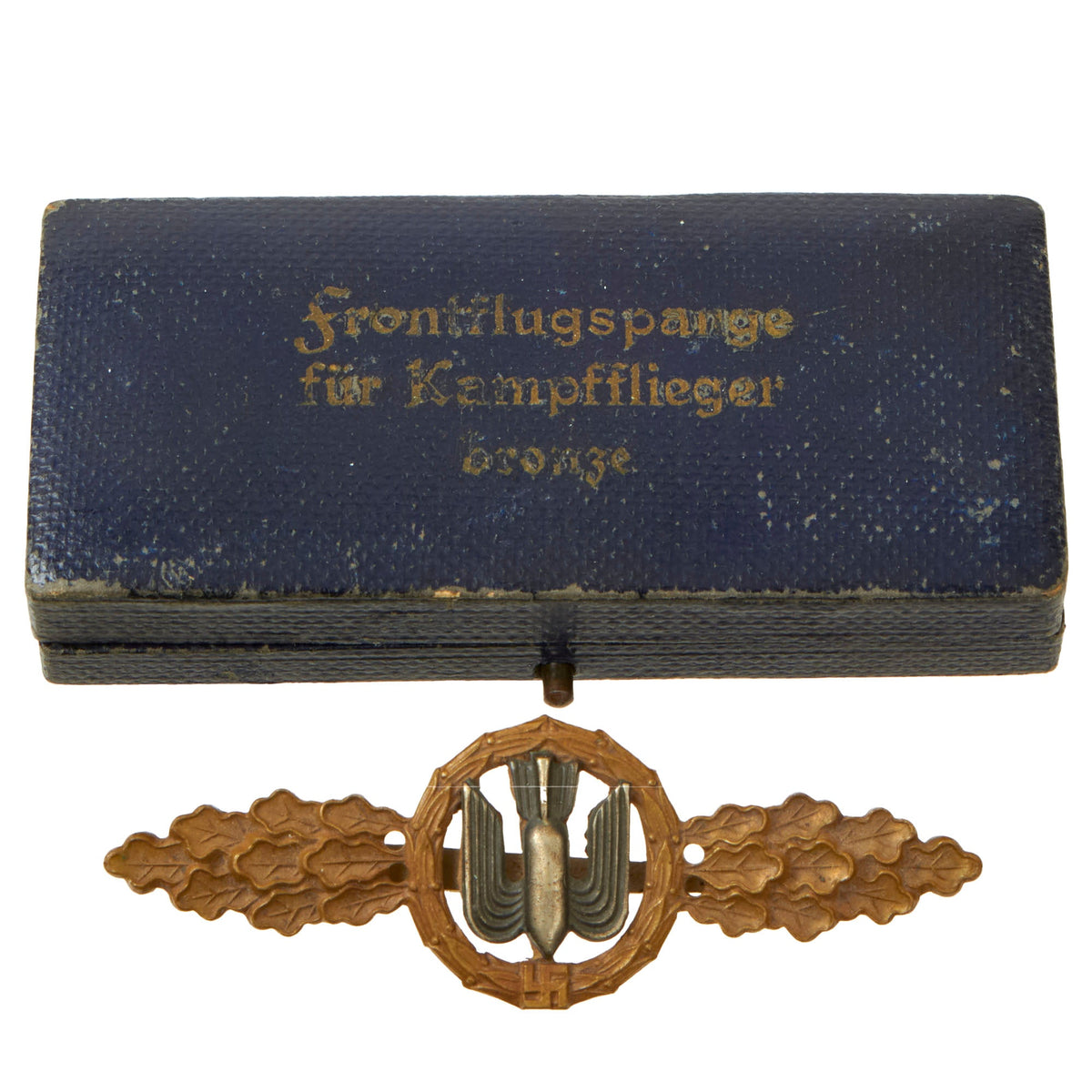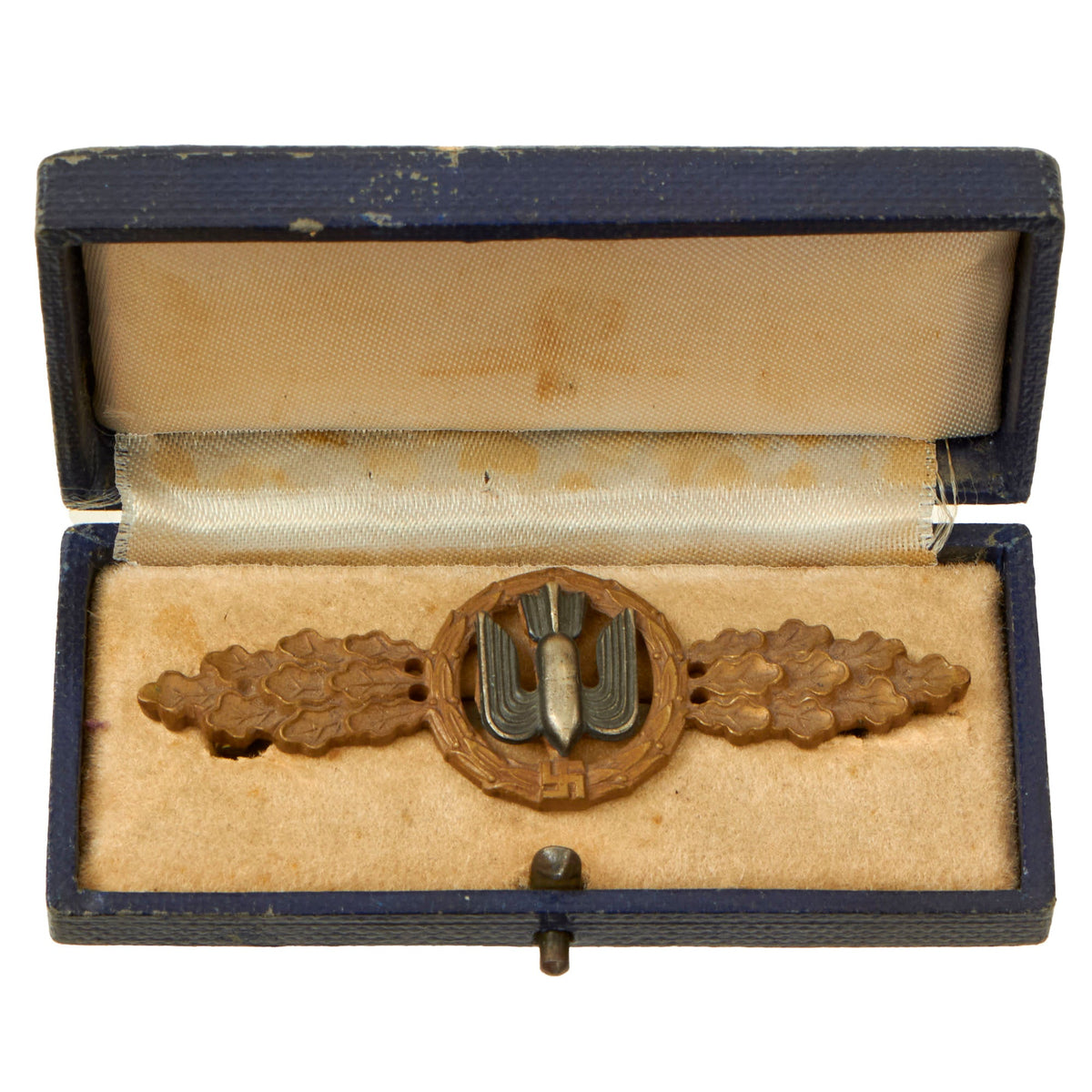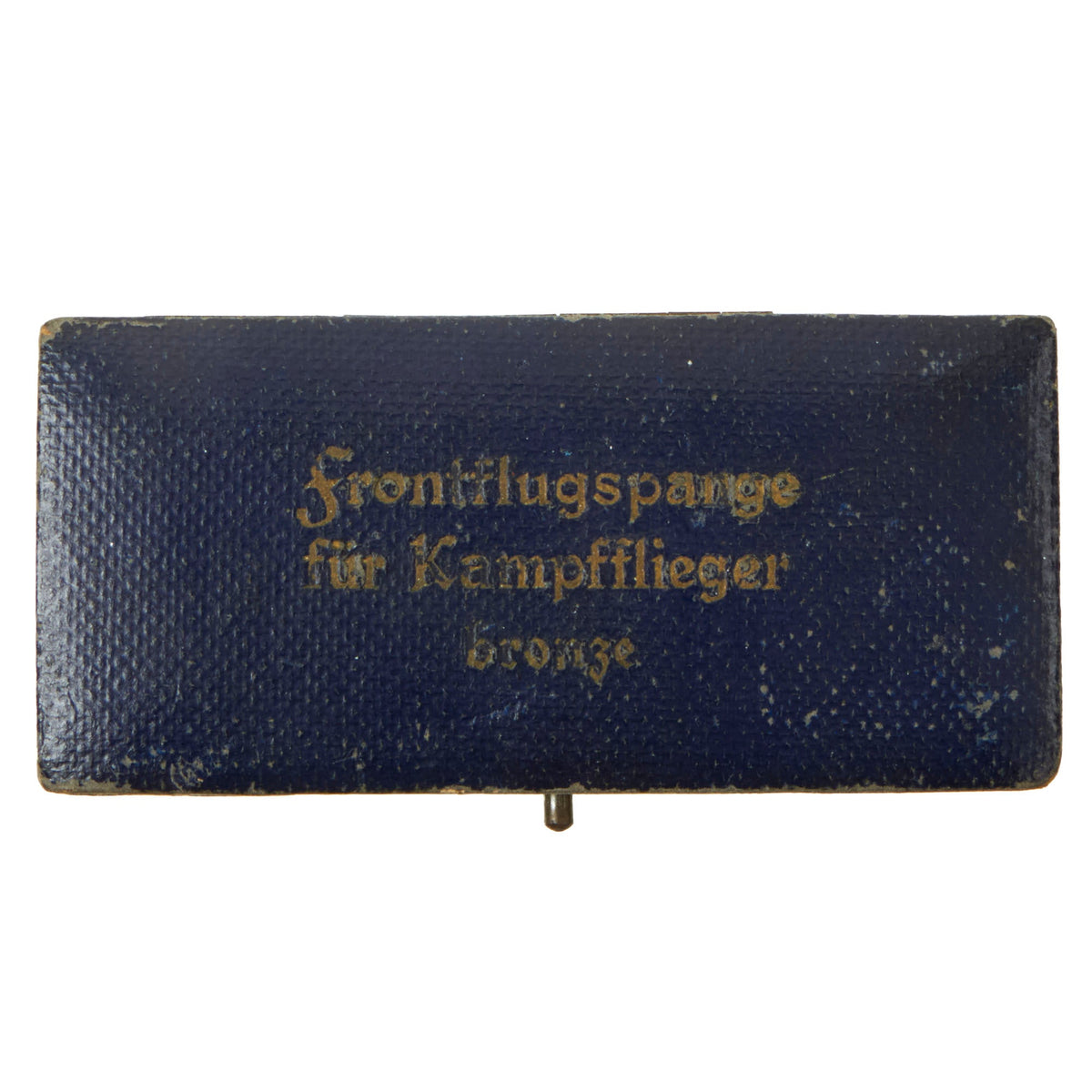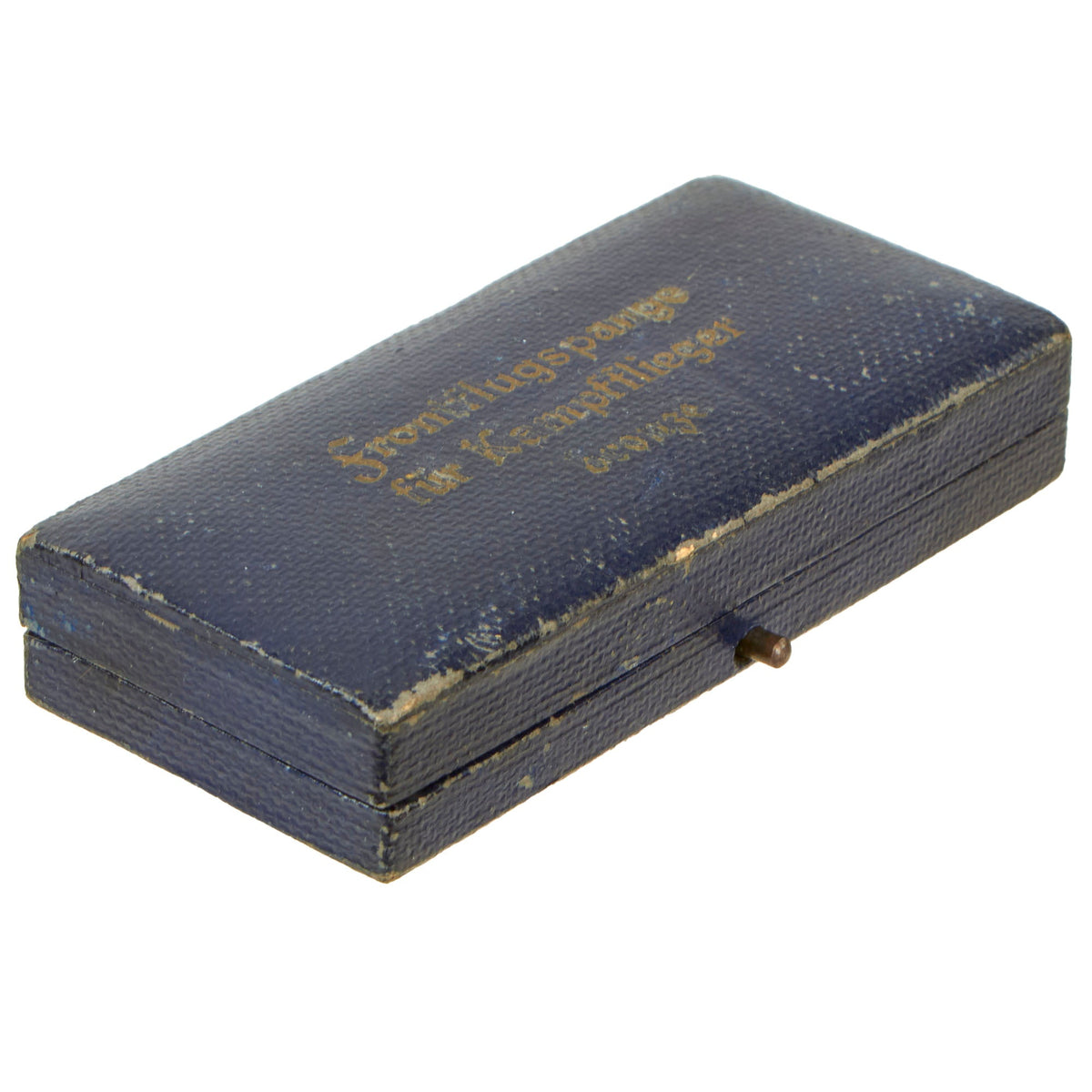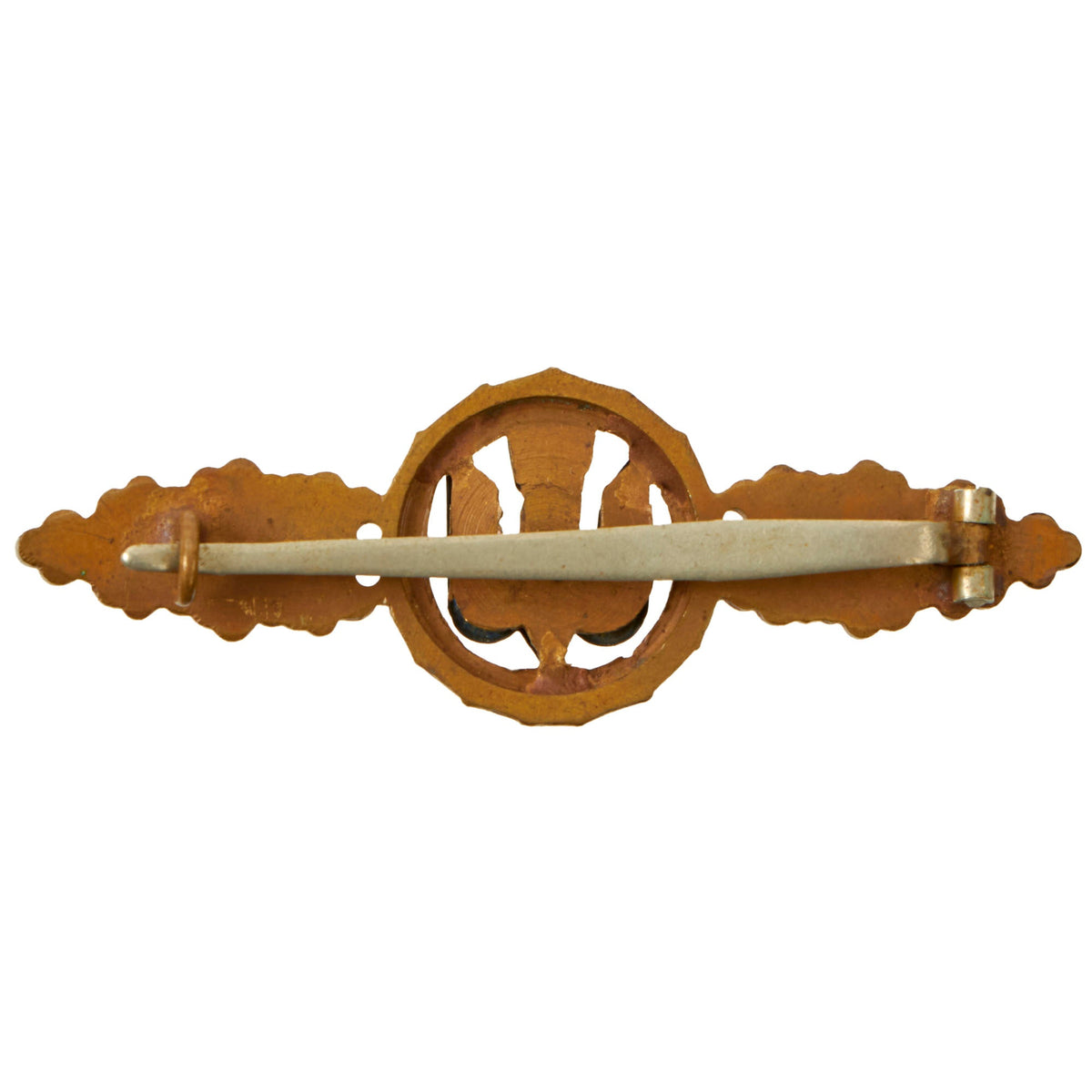Original German WWII Cased Luftwaffe Bronze Grade Front Flying Clasp for Bombers & Dive Bombers (Kampf & Sturzkampfflieger) Original Items
$ 595,00 $ 178,50
Original Item: Only One Available. This is an excellent condition German WWII Luftwaffe Front Flying Clasp in Gold Grade, as issued to Bomber (Kampfflieger) & Dive Bomber (Sturzkampfflieger pilots and crew who had flown at least 20 missions. Officially this version of the award is termed the Frontflugspange für Kampfflieger in Bronze in German. This example is in great shape, with only minor age-related oxidation and wear, which gives it a great look. The central device is antiqued nickel silver and shows light wear. The back clip is intact, and works beautifully. The oak leaves on the sides still have most of the bronze wash intact, something we rarely see! The back pin is made from solid nickel alloy, while the rest of the badge except for the insignia is bronze.
The Clasp comes complete with its original dark blue leatherette hinged case, with an inlet velvet bottom, and white satin top. It still shows the original markings on the top in German Textura Black Letter type:
Frontflugspange
für Kampfflieger
Bronze
The case still looks great, with an intact working latch and hinge! A great example of a hard to find military decoration, complete with case!
The Front Flying Clasp (Frontflugspange) was a World War II German military decoration awarded to aircrew and certain other Luftwaffe personnel in recognition of the number of operational flights flown. It was instituted by Reichsmarschall Hermann Göring on 30 January 1941. It was awarded in Bronze, Silver, and Gold with an upgrade to include diamonds possible. Pennants suspended from the clasp indicated the number of missions obtained in a given type of aircraft. Front Flying Clasps were issued for missions completed in the following Luftwaffe aircraft:
– Day Fighters
– Night Fighters
– Long Range Night Fighters
– Heavy Fighters
– Air to Ground Support Fighters
– Bombers (Including Dive Bombers)
– Reconnaissance
– Transport and Glider
All badges are formed of a central device (usually blackened) encircled by a wreath of laurel leaves set between two stylized wings of oak leaves with a swas located at the base of the wreath. Clasps measure approximately 7.5 cm (3 in) by 2.5 cm (1 in). The various designs of the central device was determined from the type of aircraft flown. The clasp pennant was instituted as additional recognition for the increased number of operational missions/flights, which grew as the war continued.
Criteria for qualification:
Bronze – 20 flown missions
Silver – 60 flown missions
Gold – 110 flown missions
Pennant to the Gold Front Flying Clasp
Day Fighters and Transport Units: 500 missions
Air to Ground Support Fighters: 400 missions
Bombers, Air Sea Rescue and Weather Reconnaissance: 300 missions
Reconnaissance and Night Fighters: 250 missions
Fast Shipping with Professional Packaging
Thanks to our longstanding association with UPS FedEx DHL, and other major international carriers, we are able to provide a range of shipping options. Our warehouse staff is expertly trained and will wrap your products according to our exact and precise specifications. Prior to shipping, your goods will be thoroughly examined and securely secured. We ship to thousands clients each day across multiple countries. This shows how we're dedicated to be the largest retailer on the internet. Warehouses and distribution centres can be located throughout Europe as well as the USA.
Note: Orders with more than one item will be assigned a processing date depending on the item.
Before shipping before shipping, we'll conduct a thorough inspection of the items you have ordered. Today, the majority of orders will be delivered within 48 hours. The delivery time will be between 3-7 days.
Returns
The stock is dynamic and we cannot completely manage it because multiple stakeholders are involved, including our factory and warehouse. So the actual stock may alter at any time. It's possible that you may not receive your order once the order has been made.
Our policy is valid for a period of 30 days. If you don't receive the product within 30 days, we are not able to issue a refund or an exchange.
You can only return an item if it is unused and in the same state as the day you received it. You must have the item in its original packaging.
Related products
Uncategorized
Uncategorized
Uncategorized
Uncategorized
Uncategorized
Uncategorized
Uncategorized
Uncategorized
Uncategorized
Uncategorized
Uncategorized
Uncategorized
Uncategorized
Uncategorized
Armored Burgonet Helmet & Polearm from Scottish Castle Leith Hall Circa 1700 Original Items
Uncategorized
Uncategorized
Uncategorized
